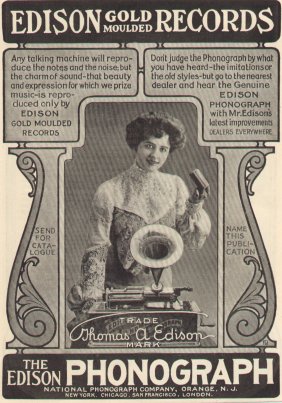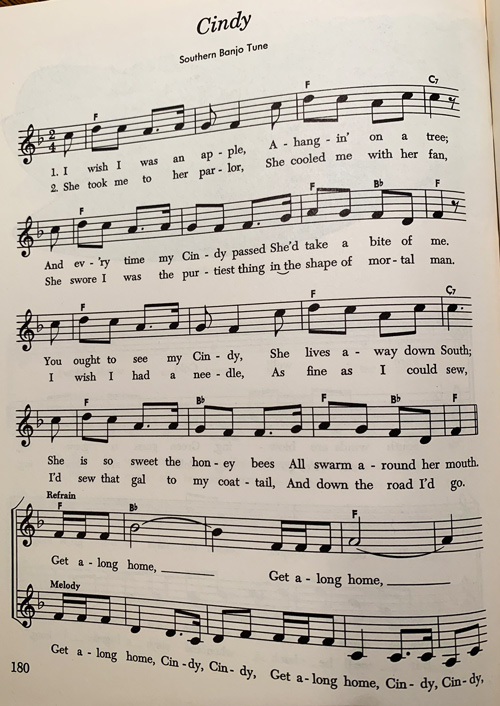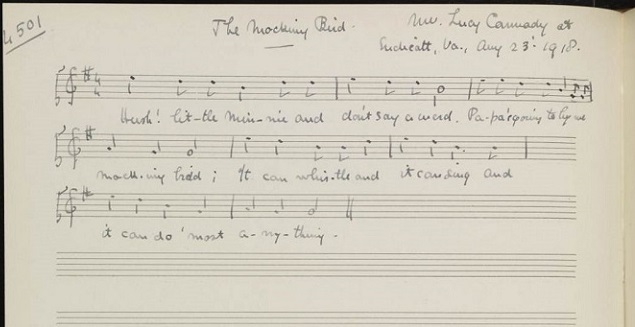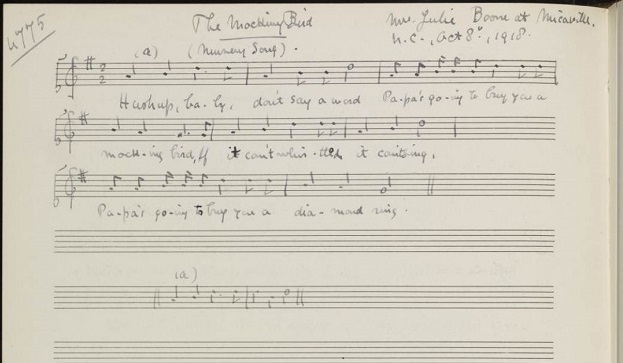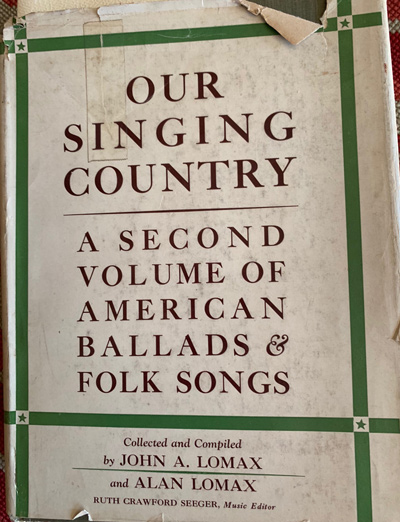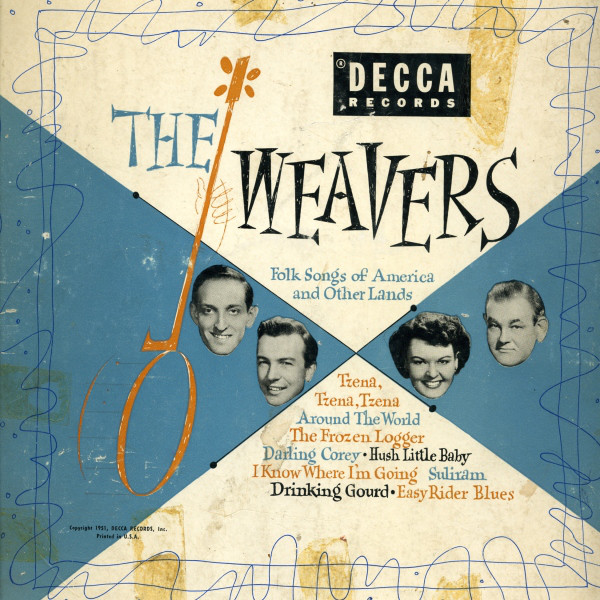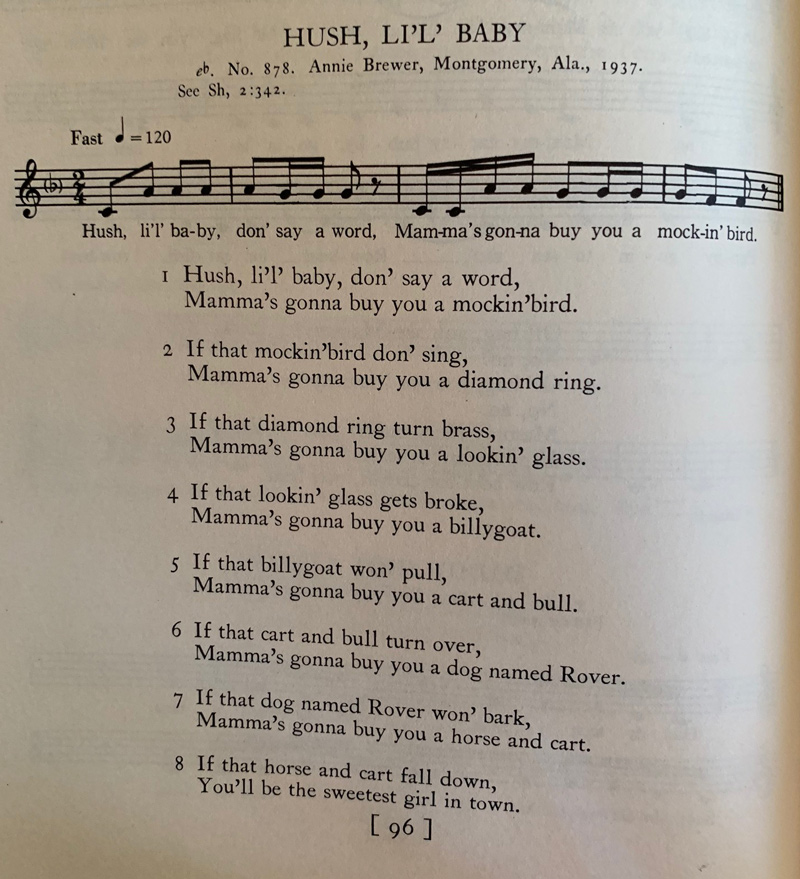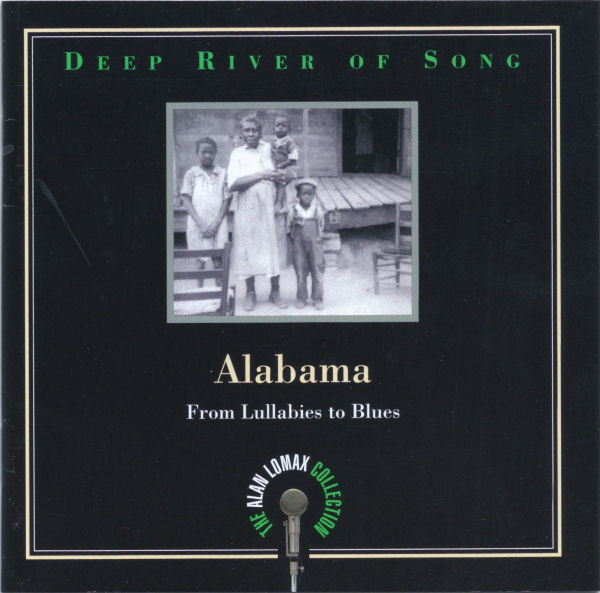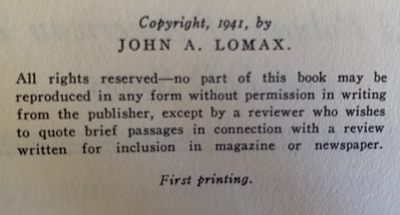 H
H 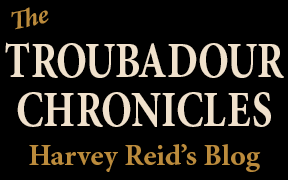
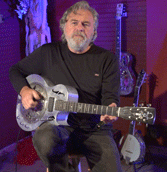

|
|
Putting A Face on Folksong Sources: The Story of Annie Brewer's Lullaby
A common "folk song" has a surprisingly tangled story behind it. How did Annie Brewer's version of a lullaby become a well-known folk song that supposedly belongs to us all? Does it really belong to Brewer's heirs, to the folklorist who put a microphone in front of her in 1937, or to the library it sits in? Most of us have at least a basic understanding of the idea that jokes, slang terms, nursery rhymes, expressions and songs sometimes filter down on top of us like cultural volcanic ash. We don't know where "Liar, liar pants on fire" or "London Bridge is falling down" came from or why we know what they are, though this process in the 21st century is less connected to the distant past. A number of melodies and songs, like "Yankee Doodle," are genuine widely distributed folk songs, though they probably spread far more now by sound recordings than by one person hearing another person sing them. For the most part, we can't accurately trace songs backwards to figure out how they spread around or where they originated, but a handful of very well-known "folk songs" have left enough footprints that we can follow at least parts of their travels. One of those is the simple children's lullaby, "Hush, Little Baby," where papa is going to buy the baby a mockingbird, a looking glass, a diamond ring, a cart and bull, a billy goat, or a dog named Rover. We know almost nothing about what it did before about 1920, but since 1937 it has left all sorts of tracks. Let's try to understand what made that song surface from the huge pool of songs to take a similar form inside the heads of large numbers of people. For such a simple little song, it raises all sorts of interesting issues and questions. Folk Song Collecting Especially in the first half of the 20th century, chasing the relatively new idea of the "archaic survival" of songs from the past in the memories of illiterate and rural people, dozens of academic and self-appointed folksong collectors excitedly rounded up a large number of American and British Isles folk songs using whatever tools they could. Sparked by the ground-breaking publication of the ten volumes of "English & Scottish Popular Ballads" by Francis Child beginning in 1882, the collectors were greatly empowered and assisted by the use of cylinder recording machines that conveniently showed up in the 1890s. Thomas Edison developed his "phonograph" machine, that only weighed about 30 pounds, using blank wax cylinders that could capture close to 4 minutes of sound via the ear-trumpet horn that could be used for playback or recording. It became a new sport to travel around rural areas with one, befriend the local people and try to capture some important or exciting music. Dorothy Scarborough, Mellinger Henry, Lawrence Gellert, Natalie Curtis, Cecil Sharp, Howard Odum, E.C. Perrow, John Jacob Niles, John and Alan Lomax and others did extensive collecting. The results of their efforts are still important and relevant, especially because what they recorded were genuine things that real people actually did.
More haphazardly than systematically, working either independently or with a library or university, these "songcatchers" collected, labeled, transcribed and archived the songs they found into a number of private and public collections. They also put some of the songs into books and curated record albums, often editing, consolidating and modifying them as they saw fit. Though the goal was to locate, document, archive and share what they found, a sizable chunk of this orally-transmitted folklore that was supposedly being celebrated for its ability to spread around among the people, was instead deliberately moved into quite different information streams. This had the effect of disturbing and profoundly altering the actual transmittal processes, and instead of being passed on from a neighbor or family member, these songs took a very different route into all the people who subsequently learned them. In an effort that spanned roughly two generations, for the most part ending with my own, dozens and possibly hundreds of artificially-inseminated folk songs, collected from scattered individuals, were put into the bloodstream of American folk music in a type of Jurassic Park experiment. Led by John and Alan Lomax, and involving Charles Seeger, Robert Gordon and a band of enthusiasts centered in and around the Archive of Folksong at the Library of Congress, they organized an effort to inject hand-picked "folk songs" into public consciousness, and also into elementary music curriculums across the country. These songs were deemed superior to the European ones that had long been used in music education, which was probably true. The children liked them better and learned them faster, and it seemed appropriate for more of the music they were learning in school to be American folk songs. Though many were not commonplace or widely-known songs, they became just that for the children who absorbed them via this information pipeline. Folksingers, both professional and amateur, also began learning and performing many of these songs, and on the heels of the Folk Boom of the 1950s, they blasted them all over the world by way of vast numbers of record albums, concerts, books and radio or television broadcasts.
Millions of Americans, including very young children, had dozens of these songs implanted in their memories, put there by music teachers, camp counselors, and "folk era" recordings. None of us in our lives ever heard the “original” field recordings of these folk songs, or were even told that they existed. You or I could have used those to learn the songs if we had access to the recordings, but instead we got the songs by way of an intermediary step where they were repackaged into songbooks with piano notation, and sung with guitars or banjos by educated mostly-white, middle-class people, or delivered by school teachers reading arrangements at their pianos. A few authentic rural performers, both black and white, managed to be heard in performance or on recordings doing more or less original versions, but the vast majority of the transmission of "folk songs" to the listeners came from 2nd or 3rd generation "sources." Perhaps the assumption was that we all had the right to go to Washington, D.C. and go into the Library of Congress archives and look at or listen to whatever original source material was there, and maybe that meant we did have access to it. “The Erie Canal,” “Red River Valley,” “Skip to My Lou,” "Streets of Laredo," “Shenandoah,” “She’ll Be Comin’ “Round the Mountain,” "Home on the Range," “Clementine,” "Cindy," "On Top of Old Smoky," “I Ride An Old Paint,” “This Old Man,” “Old MacDonald Had A Farm,” “I’ve Been Working on the Railroad”– and many more such songs became part of the cultural inheritance of our country– not just by natural processes, but greatly assisted by the efforts, perceptions and choices of a small number of very motivated white people who felt that they were on an important mission. (I can’t find evidence that any non-white people were a significant part of that folk song team, though an African-American singer and guitarist named Leslie Riddle was a key factor in the song collecting efforts of A.P. Carter for influential early recordings made by the Carter Family.) More than fifty years ago, versions of these songs were permanently stuck into my head, as well as those of untold numbers of other people of a similar age who were also exposed to them. Maybe because I am a musician I have a better memory for them than most, and thus more of a feeling that vital real estate in my mental hard drive was loaded with a bunch of questionable songs before I had any idea what was going on. I sound a bit like an anti-vaxxer here, and I am honestly not sure whether or not it would have been better to just let the capitalist marketplace fill up everyone's heads with music when they are young, which it has certainly done extensively without anyone's permission or blessings. I don't get a sense that people born after about 1960 had nearly as many of these songs embedded into them, unless they had older siblings or parents that passed them on. As school music education has shrunk and changed, that part of the pipeline has not been doing much in recent decades, and young children today no longer appear to be learning most of these same songs. Some are being re-written and turned into copyrightable material by publishers, though as far as I can tell, a handful of stalwarts remain in contemporary elementary school music instruction. My kids recognize the tune for what I know as “Skip to My Lou,” but not the words I am familiar with, though luckily for them they don't know "Clementine," unless a modern YouTuber or meme creator has recently re-used that melody for something. Before the late 1940s, virtually no one knew these folk songs or versions of them except the families or neighbors of the folklorists’ sources, yet within about thirty years they had been turned into artificial bedrock in our collective folksong landscape. Because this is getting tangled, and many of you are busy, I'll tell you my conclusion now: Instead of the collectors hiding, copyrighting, manipulating and profiting from the songs in the archives, I wish that we the people could get free and easy access to the original collections ourselves, so we can decide what songs we like or which ones we want to learn. The idea that we have been spoon-fed these somewhat-doctored versions of folk songs is bad enough, but to never get to hear the field recordings is worse, and to have been given a rather phony folk heritage and a bunch of Dolly-the-sheep genetically-engineered songs is intolerable. Let's look at a well-known example, in hopes you'll better understand why this is bugging me.
Nineteen years before Lomax found Brewer, folklorist Cecil Sharp collected two other variants of the song, that had markedly different tunes and words, both used "Papa" not "Mama." One was collected on August 23, 1918 from Lucy Cannady of Endicott, Virginia, (“Hush little minnie and don’t say a word, Papa’s going to buy you a mockingbird/ It can whistle and it can sing, it can do most anything...”)
and another from Julie Boone of Micaville, North Carolina, on October 8, 1918 (“Hush up, baby don't say a word...If it can’t whistle and it can’t sing, Papa’s going to buy you a diamond ring...”
The song certainly seems to behave like a widespread folk song, though it bears a resemblance to an 1884 minstrel-era song by F. Belasco called “Hush Little Baby, Don’t You Cry.” There is no way to determine if that song was an original source, or itself based on an already-circulating folk song. Bernice Haynes also sang another version into Lomax’s machine on May 21, 1939 near Varner, Arkansas, with a different tune and quite different words. That is currently the only one available to hear on the Library of Congress web site, in a situation that looks suspiciously like a type of misdirection, since no one knows or has copied the Haynes version. Annie Brewer’s version of “Hush, Li’l Baby” is labeled “restricted” in the catalog of the Library of Congress, though it is clearly the source of the words and the tune that people now know. All the common and high-profile versions are virtually identical to hers, although she sang "Momma" instead of the now-common "Papa." Other than that word, Brewer’s version became the source for numerous recordings by popular artists, and the song became known by millions of people who believed it be a folk song that they somehow just knew. After spending an unknown amount of time inside Brewer's head, it lived for 4 years on Lomax's aluminum disc, and then was put into a series of books, beginning with the John & Alan Lomax "Our Singing Country" in 1941.
The song then appeared on a number of recordings, beginning with The Weavers in 1951, where they substituted "Papa" for "Mama," giving them "plausible deniability" of some sort as to whether it was lifted from Brewer's version. The rest of the words and the tune are Brewer's, except for changing won't to don't, adding and before every verse, and changing "turns brass" to "is brass."
That recording was followed by Burl Ives, Joan Baez, Peter, Paul & Mary, Jean Ritchie, Ed McCurdy, John Langstaff, Milt Okun, Sandy & Caroline Paton, Nina Simone, Mike & Peggy Seeger, Carly Simon & James Taylor, the Mormon Tabernacle Choir, Celtic Woman and numerous others. Here is my Spotify playlist of 12 of those versions. (Interestingly, both Milt Okun and Mike Seeger sing "Momma", and "turns brass," staying closer to the Brewer version.) There are now an almost uncountable number of lullaby recordings, children’s music albums and “music for babies” vocal and instrumental versions– other than Nina Simone’s modified melody all of them feature the identical Annie Brewer melody and words slightly adapted by Pete Seeger, except on the final line where Brewer sings "You'll be the sweetest girl in town." All the published and recorded versions out there are labeled “Public Domain,” and Annie Brewer’s contribution, though essential and undoubtedly the source of all the others, has been lost, ignored, forgotten or removed.
Folksinger Pete Seeger's stepmother, Ruth Crawford-Seeger, was paid a dollar (actually $300 for 300 songs) in 1940 to listen to the aluminum recording disc, and to write the musical notation that was put in the book (above), which is a fascinating story in its own right (that I intend to tell in another posting), since she was a highly-respected modernist composer, as well as the mother of Mike & Peggy Seeger and the music editor of the 1941 book. (She changed "break down" to "fall down" and left out a final unintelligible verse that ends "You'll still be asleep by half past nine.") It's not much of a secret where the Weavers got the song, since Pete was in that group, his father worked for the Library of Congress, and his dad's second wife, that he married when Pete was 13, had the aluminum disc in the house and listened to it repeatedly as she wrote the song down. Pete was 18 when Brewer made the field recording, 22 when the book came out, and possibly lived at home then after dropping out of Harvard in 1938, and likely heard the Brewer recording himself. He worked in 1939 at the Archive of Folksong assisting Alan Lomax, though he was 32 and a founding member of the Weavers in 1951 when they put that song on their album Folk Songs of America and Other Lands. The previous year the folk quartet had scored a huge #1 pop hit with the million-selling "Goodnight Irene," and they reached the top of the pop charts again in early 1951 with Seeger's arrangement of “On Top of Old Smoky,” also a "collected" and modified folk song.
The 43-second-long a capella original Annie Brewer “Hush, Li'l Baby” (listen to it here) was issued by Rounder Records in 2001 on an album of field recordings, catalog #1829, titled “Deep River of Song: From Lullabies to Blues,” with the copyright notice that the sound recording was owned and licensed by The Association for Cultural Equity, a 501(c3) non-profit corporation, "housed" at Hunter College in New York City. That entity was founded in 1983 by John Lomax's son Alan Lomax, at the age of 67, twenty years before his death. The song is said to be under “exclusive license to Rounder Records,” which appears to mean that Rounder struck a deal with Lomax’s corporation to re-issue songs from the archive, presumably including the Library of Congress, since that song has been ostensibly under their control in the Archive of Folk Song since 1937. Oddly, the LOC explains quite carefully that “Items created by Library of Congress employees in the scope of their employment are U.S. Government works not subject to copyright in the United States...” which appears to say that because John Lomax was working for the government when he collected the song, neither his son's corporation or Rounder Records has a right to its copyright. The only entity among those three who created anything was Annie Brewer. I'm not a lawyer, but this might say that because her version of that song was taken from her by someone who was working for the government, the sound recording is somehow owned by the government, or perhaps not under copyright. Because she did not file paperwork claiming it as hers, she also appears to have forfeited any claim to owning either the song itself, her arrangement of it, or of the sound recording of her voice singing it. All of this cleverly obscures the fact that the version everyone knows is Brewer’s with very minor variations, while we accept that various people took it and changed it a little because it was just a folk song. None of Brewer’s 12 collected songs are available to hear in audio format from the LOC, though "Hush Little Baby" and an original song of hers titled "Roosevelt Blues" have appeared on commercial albums of compilations of field recordings, licensed by the Lomax organization. 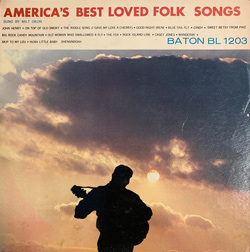
When folk music producer Milt Okun recorded "Hush Little Baby" in 1957 for his America's Best-Loved Folk Songs LP on Baton records, it was presumably learned from either the Lomax book or the Weavers' recording, but was credited as Public Domain. Since Okun produced and helped create Peter, Paul & Mary five years later, it stands to reason that they learned the song from him, or from the Weavers directly, and almost certainly not from the 1941 book or a trip to the Library of Congress. Okun may have learned it from the book, since he sang "Momma" and "turns brass," though like the Weavers he added the word "And" in front of every verse, which Brewer did not do. When John Lomax put the song in his 1941 collection, he personally claimed the copyright to all the material in the book, with the sentence: “All rights reserved-- no part of this book may be reproduced in any form without permission in writing from the publisher, except by a reviewer who wishes to quote brief passages in connection with a review written for inclusion in magazine or newspaper.” (I wonder if I am violating his copyright by reproducing his copyright notice.)
The question poses itself of whether it is fair or reasonable that Annie Brewer surrendered her right to ownership of her version of the song as soon as Lomax captured it on a government field recording. Does she and her estate permanently forfeit any claim to any money the song generates? Does Lomax's copyright claim include her words and melody, or just whatever new or written things were added? Because all this happened before the Copyright Act of 1976, it is probably true that the only way she would have legal standing to claim any ownership of the song was if she had filed paperwork with the Copyright Office prior to or soon after publication– and since Lomax presumably did that, he got the poker chips. Confusingly, Congress has still not completely weighed in on the issue of who owns sound recordings made before 1972, and for decades it has been based on state law. Especially in the case of non-modern states like Alabama, their legislatures often never bothered to even write such a law, which may be the reason that the Lomax organization still controls that sound recording. Copyright laws involving folk songs are very subtle, and the handful of cases that have gone some distance through the courts make it clear that most of the issues are not so clear or broadly applicable to all folk songs. It's possible that you or I can record or perform that song without violating anyone's intellectual property, but we couldn't put Brewer's recording itself on an album compilation. There needs to be a good-sized chunk of money at stake before it is in anybody's best interest to hire lawyers, which could mean that this puzzling situation will remain the way it is as long as no one sues anyone. So when I bought an mp3 digital download of that song from Amazon for $1.29 in 2019, did Annie Brewer’s estate deserve or get any of that money? Should the recording be available for free listening or download on the LOC web site? Did the record company, the Library of Congress or the ACE get some or all of my money? There can’t be much money involved for sales of that recording, but streaming royalties can add up, and so do the mechanicals for all the other derivative recorded versions that are also streaming and being sold. The aggregate sum of sales and streaming for all the folk songs from the all the collections that are circulating must generate a measurable amount of money every year. Is it mostly going to salaries and office expenses for the non-profit organizations, as is often the case? The ACE website says that “ACE repatriates artists’ rights and royalties to their estates and families, and returns our media collections to those who created them and their places of origin,” yet a Google search for the phrases “©1937 by Annie Brewer,” “© by Annie Brewer” return zero hits, other than books by another author of that name. I found this explanation: “The American Folklife Center, the Librarian of The Library of Congress, and Anna Lomax Wood worked out a unique partnership by which the Library got the originals (and digital copies) of Alan Lomax’s works and ACE put them into wide circulation.” How does Lomax’s corporation still control and perhaps make money from this song that was taken from Annie Brewer 82 years ago when Lomax’s father was an employee of the U.S. government, and 64 years before it was licensed to Rounder? Where does Annie Brewer’s contribution or creative ownership figure into the current status and income of the song and the recording? I confess to wondering, even a little angrily, at what legal or economic forces gave Lomax or the LOC the legal right to appropriate ownership of Annie Brewer’s song for nearly 100 years, or in virtual perpetuity as they collect their streaming royalties unchallenged? The 1941 folksong book sold poorly, and any royalty money it generated would have been a pittance. That outcome was consistent with Lomax’s expectations and justifications, since both he and his son Alan repeatedly said that because they were working hard to preserve and propagate American folk music, they should not be faulted for claiming a modest compensation. But the story of the paid and unpaid royalty money that all the hundreds of recordings of that song and others like it have generated is rarely discussed publicly, and something about this situation bothers me and maybe should bother you too. (Maybe a nice folklorist will stumble on this post and kindly explain to me why I should not be troubled by any of this.) From what I have read about ownership of old photographs, any that Lomax took of Annie Brewer would presumably be considered to be property of her estate, unless possibly the photographer was working for the government. Perhaps because she was poor and black and had no lawyer or professional advice, is she permanently out of luck claiming any legal right to her likeness or music, even though the words and melody that seem to have come from her have sold large numbers of recordings? Politicians talk today about reparations to attempt to right the wrongs of slavery, and there have been quite a number of instances where Native Americans have had significant amounts of land returned to them once it became clear that treaties were violated in the past. When the hugely-popular and very influential movie "O Brother Where Art Thou" came out in 2000, it contained "folk songs" in the Grammy-winning soundtrack. Music producer T-Bone Burnett did something both honorable and unusual: he located and paid the original sources. Early in the movie, it featured a 1959 Alan Lomax field recording of "Po' Lazarus," that was recorded at Parchman Farm, the Mississippi State Penitentiary, where inmate James Carter led a group of prisoners in singing while chopping logs at the prison. Burnett, Don Fleming and Lomax's daughter Anna tracked down the 75-year old Carter in a tenement in Chicago, and paid him $20,000 in royalty money, marking a very unusual event in what might be termed "folk music reparations." It would be impossible to retroactively collect royalty money from all the recordings of "Hush, Little Baby" and to pay them to the heirs of Annie Brewer, if there are any, and the use of the original sound recording in a movie is a legally different thing from recording a version of someone else's copyrighted song. But does that mean we simply do nothing, and let the song and its fellow "collected" folk songs continue to accrue streaming and download royalties worldwide while knowing full well that none of the money is going to the source of the music? Is anyone in charge of making sure that happens– is there any "honor system" in folklore song collecting? Alan Lomax was happy to collect 1/3 of the royalties from the Kingston Trio's hit version of "Tom Dooley," though his claim to it wasn't much different from what happened to Annie Brewer. The source of "Tom Dooley," North Carolina banjo player Frank Proffitt, ended up with a 1/3 share, split with the collector (heirs of Frank Warner) and the song's publisher (Lomax.) The positive trend I think I see, which I hope is really happening, is that the skewing of the folksong DNA that was caused by the over-energetic folksong advocates of the 20th century is slowly righting itself. Young people are getting increasing access to the archives of old recordings, and are feeling free to enjoy, learn, like or dislike what they find there, which is exactly what should have been happening all along. Folklorists should not play Folksong God or try to breed songs in captivity, and I suspect that the populist and sometimes socialist folksong collectors of the past might even agree wholeheartedly that the information forces should just let us all hear the music that was taken from our "sources." To many of us, they are as sacred as the bones of ancestors are to Indians and other people with deep connections to the past. If you know more about this song or its saga let me know. This is another posting where I'm trying to raise issues, questions and awareness in the world of modern troubadours... You deserve a reward or a door prize for making it to the end. Please check back to look for new posts as I get them done. I plan to cover a wide range of issues and topics. I don't have a way for you to comment here, but I welcome your emails with your reactions. Feel free to cheer me on, or to disagree... Chordally yours, HARVEY REID ©2020
|

